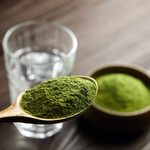“Raw” Sugar: A Raw Deal?
Get the dirt on raw sugar. Think processing has ruined the food industry? You may be right, but sometimes processed is better -unless you like bug parts in your sweetener.
All About “Raw” Sugar
Should you pay more for so-called “raw” sugar? Sure, if you like its taste and texture. But don’t buy the hype suggesting that it’s more nutritious or wholesome than plain old table sugar.
Most “raw” sugar sold in Canada is turbinado sugar, so named because it is a purified sugar liquid spun in turbines, or centrifuges. While common white sugar crystals are stripped of molasses during processing, turbinado sugar retains some of this syrup, so it has a yellow-gold or tan color. Similar sweeteners include demerara and muscovado sugars.
While these sugars have unique taste and cooking properties, they are scarcely more healthful than other sweeteners. Unlike table sugar, they contain minerals, but only a trace. Nor do turbinado and related sugars offer any edge for dieters; like table sugar, they provide 15 calories per teaspoon.
The Real Deal
What’s more, using the term “raw” to advertise any sugar sold to consumers in Canada is misleading. Strictly speaking, raw sugar is the term used for the tan or brown granules produced when mills process sugar-cane stalks. Raw sugar is then refined to make table sugar and other forms of the sweetener.
True raw sugar is technically not available for sale in Canada since it doesn’t meet Canadian regulatory standards-and you wouldn’t want to buy it since it contains yeast, mold, bacteria, dirt, bug parts, and other undesirable stuff.
Sign up for our weekly newsletters and have our latest articles on healthy living delivered right to your inbox.



